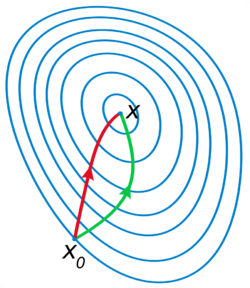🎥 Individual project#
⏱ | words
Individual project in ECON2125/6012 is a chance to demonstrate your understanding of the optimization techniques covered in the course while getting experience in modern communication methods.
The project is an explanatory video in which you show and comment on how you solved the problem.
The video should be no longer than 5 minutes
You will be assigned a unique individual optimization problem to solve
It is mandatory that the video shows the face of the presenter in the beginning and at the end, but better during the whole video
The video should be submitted as a link to the video on YouTube or similar platform
The projects will be assessed on whether the problems are solved correctly in full, clarity of explanation and quality of the presentation including technical level of the video
How to initiate and submit your individual project#
Find the individual project quiz in the Assessments section of the course page on Wattle.
This quiz will be available from May 6, 12:00pm, and will close on the deadline of Friday, May 23, 23:59. No late submissions will be accepted.
The quiz will not have a time limit: you can access it at any time during until the deadline.
Start the attempt: the first question will present you with the constrained optimization problem you need to solve.
Take you time to carefully study the problem, follow all steps and subquestions in the probem.
Once you have the solution, script and practice you video.
Record the video explainer, see technical tips below.
Upload the video to YouTube, Vimeo, DropBox, OneDrive or similar platform or cloud storage, copy the sharable link.
Go back to the quiz, continue your attemp, and paste the link to your video in the answer box of the relevant question.
Submit the quiz, and you are done.
Grading rubric for the individual video essay#
Criterion |
No points |
Partial points |
Full points |
|---|---|---|---|
Correctness of the solution |
Wrong solution reported |
Partial answer is obtained and reported. Some inaccuracies in the derivation. |
Full correct and complete solution is derived and reported. Only minor inaccuracies are permitted. |
Clarity of the explanation |
Explanation of the solution method and its logic is flawed. Video gives little evidence of student’s own understanding of the solution. |
The video provides some evidence of understanding of the solution methods, but logic behind it is not communicated well. |
The video essay provides clear evidence that the student fully understands and can communicate the logic behind the solution to the problem. |
Technical level |
The video and/or sound quality makes it impossible to follow the explanation of the solution. |
The technical level of the video does not allow to follow the presentation of the solution clearly and in full. Video is too long. |
Picture and sound quality is sufficiently high to clearly convey all the steps of the solution. Time limit is not exceeded. |
When reviewing your video, ask yourself the following questions (thanks to Steven Stern):
Was my speech clear and an appropriate speed and volume?
Did I speak in well-formed sentences?
Did I avoid hesitation and filler (“uh”) in my speech?
Did I use good grammar and sentence structure?
Did I use intonation and stress to help me in making my points and guiding the listener?
Did I sound confident?
Did I exhibit enthusiasm about my problem?
Did I make eye contact with the camera?
Technical tips on how to record your video#
Your video should be somewhat similar to the recordings of the lectures on unconstrained optimization of convexity.
Writing down the solution of your problem#



The gold standard is to write math in LaTeX. You can use Overleaf to produce a beautifully typeset math, relying on its large collection of templates.
Mathcha and Lyx are other available math-enabled editors. Feel free to explore other online or offline math-enabled text editors. Microsoft Word or Google Docs are suboptimal for this task, but you can use them if you are comfortable with them.
You could also use a whiteboard or a piece of paper to write down the solution. In this case, make sure that the camera is focused on the writing and that the writing is clear and legible.
feel free to use graphing tools like Desmos to visualize the problem
Recording the video#


The best way to screen cast in 2025 seems to be Loom. The free tier is limited to 5 min videos which is just enough for the assignment. You can record your screen and your face at the same time, which is the best way really. Feel free to explore loom alternatives thread on Reddit for similar options.
You can use ANU account to access Zoom to share and record your screen. With this option, remember to do a test beforehand to make sure your settings allow to save shared screen and your face.
Mac allows for native screen recording, see here, but the video will have to be edited to include your face. Thankfully, QuickTime player on Mac allows for simple edits like joining two video files together.
As the last resort, you can use the camera on your phone to record yourself and the solution of the problem (probably only appropriate for the hand written options). Please make sure that the camera is focused on the writing and that the writing is clear and legible.
It is well known that the perceived quality of a video is very much affected by the sound quality. If available, use a headset with a microphone or an external or lapel mic. A nice sound environment tries to minimize background noise and echoes (something line a closet with clothes hanging is a good approximation of a sound booth).
But pay attention to the light in the scene especially when you are shooting your face together with the screen, additional sources of light may be appropriate.
It’s a good idea to make a short test video or two to check the quality of the picture and the sound.
Feel free to share tech ideas with your classmates.
